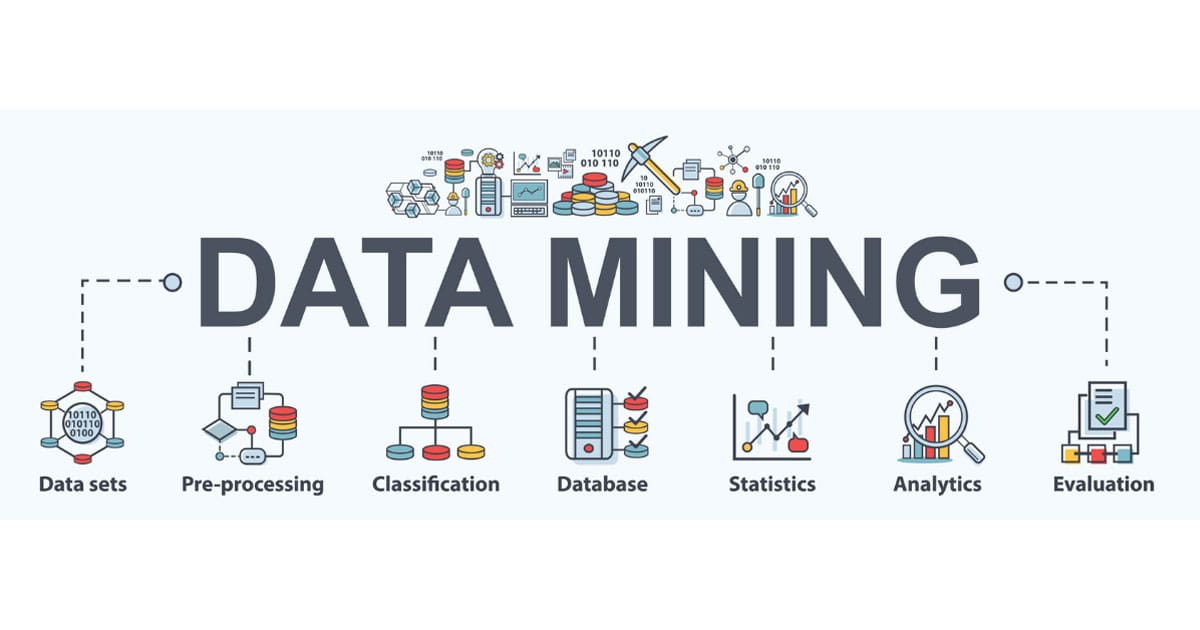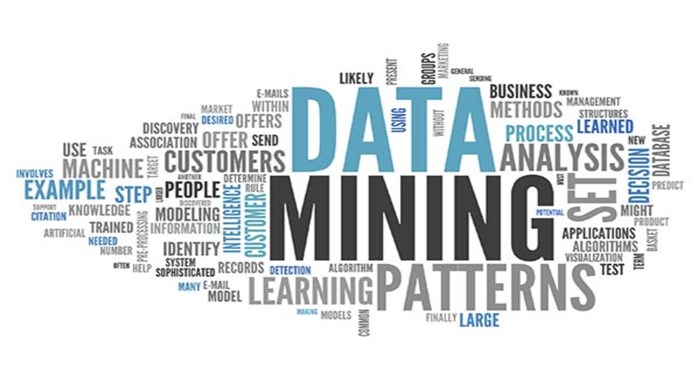
Understanding Data Mining Fundamentals
Defining Data Mining
Data mining is like being a digital detective, sifting through mountains of information to uncover hidden gems of knowledge. It's the process of discovering patterns, correlations, and insights from large datasets that might not be immediately apparent. In today's data-driven world, data mining has become an indispensable tool for businesses and researchers alike. It's the secret sauce that helps companies predict customer behavior, optimize operations, and make informed decisions.
Key aspects of data mining:
Uncovering hidden patterns in large datasets
Predicting future trends based on historical data
Transforming raw information into actionable intelligence
Driving success and innovation in organizations

Evolution of Data Mining
The journey of data mining is a fascinating tale of technological progress. It all started in the 1960s with simple database management and data collection. As computers became more powerful and storage got cheaper, the 1980s saw the birth of data warehousing and decision support systems. The real explosion happened in the 1990s and 2000s with sophisticated algorithms, machine learning, and the ability to handle massive datasets.
Today, data mining is light-years ahead of where it began, featuring real-time analysis, predictive modeling, and AI-powered insights. Looking forward, the future of data mining is incredibly exciting, with quantum computing and edge analytics promising to revolutionize how we extract value from data.
Essential Data Mining Techniques Explained
Classification Methods
Classification in data mining is like sorting your laundry – you're putting things into predefined categories based on their characteristics. It's a supervised learning technique where you train your model on labeled data, and then it can categorize new, unseen data. This technique is incredibly versatile and widely used in various applications, from spam email detection to medical diagnosis.
Popular classification algorithms include Decision Trees, Random Forests, and Support Vector Machines. Each has its strengths and is suited for different types of data and problems. The key is choosing the right algorithm for your specific needs and data characteristics.
Clustering Approaches
Clustering is the introvert of data mining techniques – it finds groups within data without being told what to look for. Unlike classification, clustering is an unsupervised learning method, meaning it doesn't rely on predefined categories. Instead, it discovers natural groupings based on similarities in the data.
Some well-known clustering algorithms include K-means, hierarchical clustering, and DBSCAN. The choice of algorithm depends on your data's nature and what you're trying to achieve. Clustering is like having a bird's eye view of your data landscape, revealing patterns you might never have noticed otherwise.
Predictive Analysis in Data Mining
Regression Analysis
Regression analysis in data mining is like having a crystal ball, but one that's grounded in mathematical precision. It's all about understanding and quantifying relationships between variables to make predictions. Unlike classification, which deals with categorical outcomes, regression predicts continuous values.
There are several types of regression, each suited for different scenarios:
Linear regression for straightforward relationships
Polynomial regression for curved relationships
Multiple regression for handling several independent variables
Logistic regression for categorical predictors
The power of regression lies in its ability to not just predict outcomes, but also to help us understand the factors driving those outcomes.
Time Series Forecasting
Time series forecasting is like being a weather forecaster for your data. It's all about predicting future values based on previously observed values, taking into account the time dimension. This technique is crucial in fields where timing is everything – from stock market predictions to sales forecasting and even climate modeling.
Various approaches to time series forecasting include ARIMA models, exponential smoothing, and Prophet (developed by Facebook). The key to successful time series forecasting is understanding the underlying patterns in your data and choosing the right model to capture those patterns accurately.
Advanced Data Mining Strategies
Association Rule Learning
Association rule learning is like being a detective in a supermarket, uncovering hidden relationships between items. This technique is all about discovering interesting relations between variables in large databases. It's most famously used in market basket analysis but has applications in healthcare, web usage mining, and more.
The most well-known algorithm in this field is Apriori, but there are others like FP-Growth and ECLAT, each with its own strengths. The power of association rule learning lies in its ability to uncover non-intuitive relationships that might be missed by traditional analysis.
Neural Networks And Deep Learning
Neural networks and deep learning in data mining are like giving your computer a brain that can learn and adapt. These techniques are inspired by the human brain's structure and function, using interconnected nodes (neurons) to process and learn from data. They excel at handling complex, non-linear relationships in data, making them incredibly powerful for tasks like image and speech recognition, natural language processing, and even playing complex games.
Implementing Data Mining with ResearchFlow AI
Streamlining Data Analysis
ResearchFlow AI is revolutionizing data mining with features like one-click PDF upload and knowledge mapping. These tools transform complex research papers or datasets into structured, visual knowledge maps, making data analysis more intuitive and efficient. For data miners, this means spending less time on manual data preprocessing and more time on high-value analysis and interpretation.
Enhancing Insights with AI-Powered Tools
ResearchFlow's AI-powered tools take data mining to the next level with features like multi-document comparison and AI-assisted mind mapping. These tools allow users to analyze multiple datasets simultaneously, identify correlations, and visualize complex data relationships in an intuitive format.
Optimizing Data Mining Results
Best Practices for Data Preparation
Data preparation is crucial for successful data mining. Key steps include data cleaning, standardization and normalization, feature selection and engineering, considering data format and structure, and ensuring data privacy and ethical compliance.
Interpreting and Presenting Findings
Interpreting and presenting data mining results effectively involves clearly defining objectives, digging deeper into patterns, using appropriate visualizations, tailoring the message to the audience, and being transparent about methodology and limitations.
Real-World Applications of Data Mining

Business Intelligence and Decision Making
Data mining is the backbone of modern business intelligence, used for customer segmentation, fraud detection, risk assessment, and more. ResearchFlow AI enhances these applications by providing intuitive tools for handling complex data and enabling faster, more informed decision-making.
Scientific Research and Discovery
In scientific research, data mining is transforming how we approach complex problems across various disciplines. ResearchFlow AI's features, such as converting papers into interactive knowledge maps and AI-assisted mind mapping, are accelerating the research process and enhancing data interpretation.
Data Mining Technique | Key Characteristics | Typical Applications |
|---|---|---|
Classification | Categorizes data into predefined classes | Customer segmentation, Spam detection |
Clustering | Groups similar data points without predefined categories | Market segmentation, Document clustering |
Regression | Predicts continuous values based on other variables | Sales forecasting, Stock price prediction |
Time Series Analysis | Analyzes data points collected over time | Weather forecasting, Economic trend analysis |
Association Rule Learning | Discovers relationships between variables | Market basket analysis, Recommendation systems |
Neural Networks | Mimics human brain to recognize patterns | Image recognition, Natural language processing |
